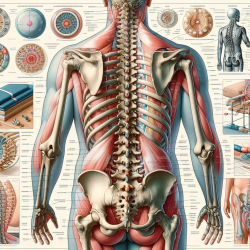Understanding the Role of EHRs in Identifying Rare Disorders
In the realm of rare disorders, the challenge of accurate diagnosis is compounded by the scarcity of cases and the intricacies of symptoms. Acquired hemophilia (AH), a rare autoimmune bleeding disorder, exemplifies these challenges. Recent research published in the Journal of Blood Medicine sheds light on the potential of electronic health records (EHRs) in identifying patients with AH, a condition characterized by inhibitory autoantibodies against clotting factor VIII.
The Power of EHRs: A Data-Driven Approach
The study utilized a large EHR database to identify patients with AH by applying a combination of ICD-9-CM codes, natural language processing (NLP) of physician notes, and laboratory results. This multimodal approach was crucial in overcoming the limitations of relying solely on coding, which can often lead to misidentification due to the rarity and complexity of AH.
From a pool of approximately 13 million patient records, only 31 individuals met the stringent criteria for AH. This underscores the rarity of the condition but also highlights the effectiveness of a comprehensive data analysis strategy in pinpointing potential cases.
Lessons for Practitioners: Improving Diagnostic Accuracy
For practitioners, the implications of this study are significant. Here are some key takeaways:
- Embrace Multimodal Analysis: Utilizing a combination of coding, NLP, and laboratory results can enhance diagnostic accuracy, especially for rare disorders.
- Understand the Limitations of Coding: ICD-9-CM codes alone may not suffice. Familiarity with the nuances of coding and potential errors is crucial.
- Leverage NLP Tools: NLP can extract valuable insights from unstructured data in EHRs, providing context that structured data might miss.
- Continual Learning: Stay updated with the latest research and tools available for rare disorder diagnosis.
Encouraging Further Research
The study highlights the need for improved EHR data quality and coding processes. Practitioners are encouraged to engage in further research and contribute to the development of more sophisticated diagnostic tools. By doing so, they can play a pivotal role in enhancing patient outcomes, particularly for those with rare and often overlooked conditions like AH.
For those interested in delving deeper into the methodologies and findings of this research, I highly recommend reading the original paper. Identification of people with acquired hemophilia in a large electronic health record database.










